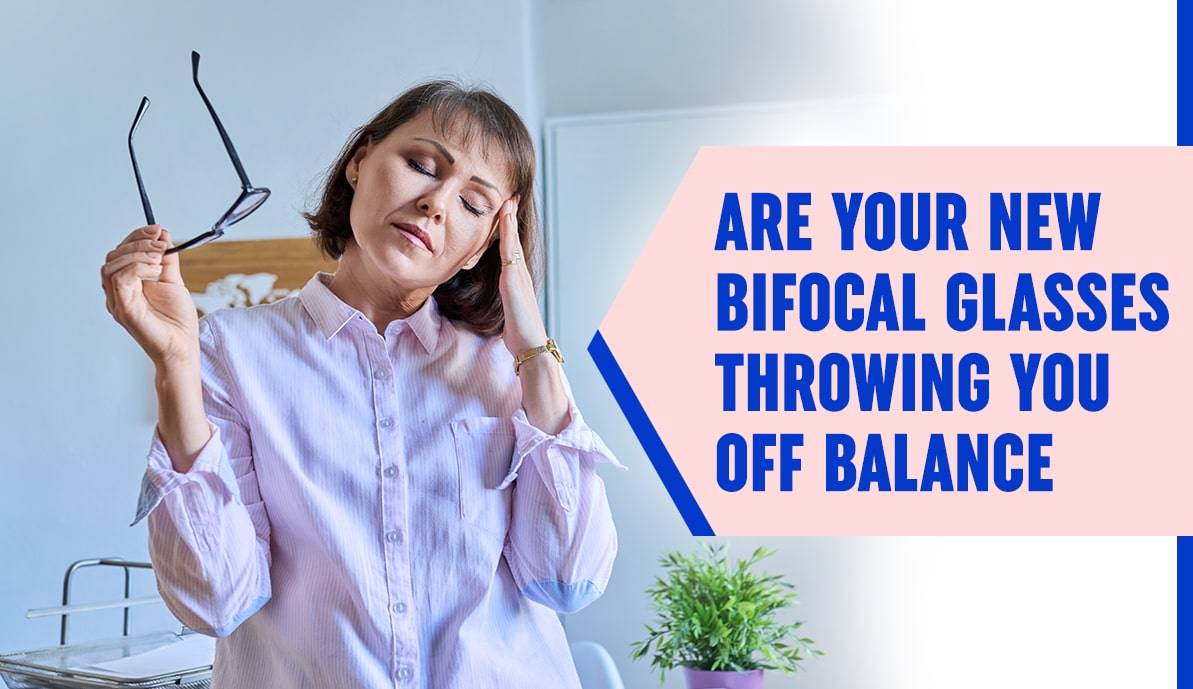Bifocal Glasses – Just What Are They?
Most of us who have spent 40 years or more on this earth face some sort of difficulty while reading things up close. Anything that you see now appears as double images or has a faint, blurry outline around. There’s no problem, however; when looking at things some distance away. They appear perfectly all right and normal, which proves, it’s high time that we start considering bifocals.
Bifocal glasses correct both your distance vision (top of the lens) and near vision (bottom of the lens). The credits for inventing the bifocal glasses go to Benjamin Franklin, who glued the halves of two different lenses together to bring the effect.
This very simple type of lens has evolved into the modern bifocal lenses over the years. Today, the flat-top bifocal (large area for distance vision; small insert/segment for up-close vision) has given way to progressive multifocal lenses (no-line; smooth change in focus) and they come as a boon to people with presbyopia. Bifocal lenses can also have add-ons like anti-reflective or anti-glare coatings, the latest being blue-screen guard.
Are Your Bifocal Glasses Affecting Your Balance?
New bifocal glasses, most of the time, hinder the wearers’ physical balance, requiring them to make compensatory head movements to see clearly. It’s a disruption to the wearer’s peripheral vision, which is responsible for maintaining optimal balance. You gradually cope with it; however, for the first few weeks:
- Avoid wearing progressive lenses during sports or driving. Opt for single-vision or wear no glasses at all! It will enhance your balance while you stay within safety limits.
- Whether you’re new to bifocal glasses or got new lenses with new optical powers, your brain and eyes will need to adjust to them. This requires a specific length of time (a week to a fortnight), which is different for every individual. Headaches and eye strains are common during this period.
Following a few steps will speed up the adjustment process and help you get through this challenge.
New Bifocal Glasses and Distorted Vision
The brain and the eyes process images together, which is hampered by poor vision. This makes objects appear warped, bent, blurred, and out-of-focus. There might also remain present issues with the perception of depth.
With new bifocal glasses, your eyes and your brain need to adjust to the lenses to obtain a clearer image for your your eyes to see. It creates extra pressure on your eyes, making them work harder during this adjustment period. Eye strain, blurry vision and a general sense of imbalance with physical activities, which sometimes even affects mental clarity and focus.
So it’s advised that do not go for driving, riding, sports activities and corporate meetings wearing your new spects. We already told you why.
The same might occur if the specsavers eye test you underwent before ordering the glasses wasn’t run properly.
What is the Specsavers Eye Test?
A Specsavers eye test is a comprehensive eye health check. It includes a variety of tests for vision and overall ocular health assessment you. It is an umbrella term that covers all of the following.
- Retinoscopy:
This test measures your ability to focus and determines whether you are near- or far-sighted.
- Snellen/ Letter-chart Test:
For measuring the sharpness of vision.
- Ophthalmoscope:
It’s a specialist torch with which the retinas, the optic nerves, and the blood vessels at the back of your eye are examined.
- Auto-refraction:
This machine measures your eyes’ ability to focus and provides an estimate of your prescription.
- Tonometry:
Measures Intraocular pressure (IOP).
- Field-of-Vision Test:
Detects the blind spots, which indicate the presence of many of the eye-related disorders.
- Slit-lamp Test:
This test detects the defective interior segments of the eyes.
- Colour vision test:
This test detects the ability/inability of the eyes to perceive certain colors.
- Keratometry test:
This test measures the respective corneal curvatures. It’s a must if you’re going to wear contact lenses beneath your glasses.
It’s always recommended that a person opts for a specsavers eye test every 12 months (for spects wearers) or 24 months (for those who don’t wear glasses). It will help detect early many adverse conditions that might be developing, even signs of general health problems like diabetes and hypertension. Alongside, it’ll ensure if any incorrect diagnosis is responsible for bringing the uncomfortable feeling, both with your old and new pair of bifocal glasses.
How Do You Adjust Easier to Your New Bifocal Glasses?
The simple solution is wearing the new glasses as much as possible. Put your glasses on right from the time you wake up and wear them all day long. It will be uncomfortable, but that’s how you’ll get used to it.
In case wearing the new glasses are giving you headaches or eye pain after some time:
- Take regular breaks and gradually increase the wearing time.
- Ensure the fit and alignment of the glasses are proper.
- Stay hydrated to maintain overall eye health.
A Quick Recap About Wearing Bifocal Glasses
It’s nothing unusual to experience some imbalance or dizziness, or about feeling nauseous when you first wear new bifocal glasses. This is because the brain needs time to adjust to the new visual input. Other common symptoms include headache, strained eyes, blurred or distorted vision and Fishbowl effect, apart from a less-than-perfect depth perception.
These symptoms start going away as the brain gets used to the new pair of bifocal glasses. But in case they become severe or lasts longer than a fortnight, it’s always advised to consult an eye specialist. Maybe it’s an incorrect prescription that’s causing the dizziness or nausea.
However, for progressive lenses, allow up to three weeks while for blue light-filtering glasses, the tint might change how your eyes perceive colours.

